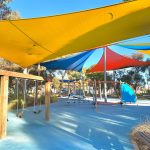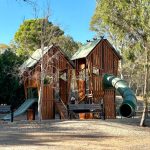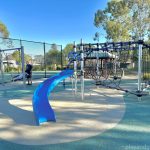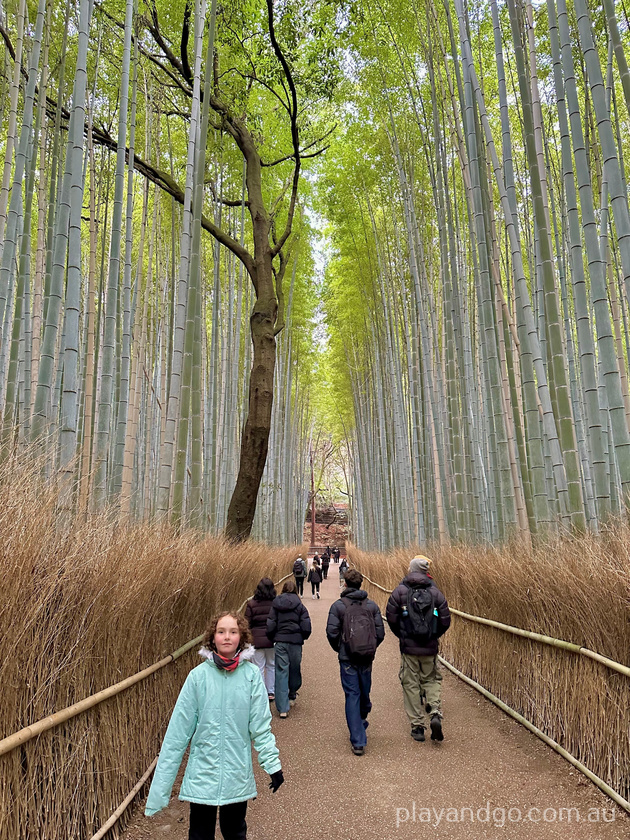
Japan is an increasingly popular destination for family travel from Australia. It’s safe, easy to get around, and full of culture and sights that kids will love.
Flights and Customs
There’s several options available from Adelaide to Japan, but you’ll almost certainly have a stopover somewhere. Don’t discount flying in to somewhere other than Tokyo – our last trip, it was cheaper to fly into Osaka and out of Tokyo, so check all options.
Note that there are two main airports in Tokyo, Narita and Haneda. Of the two, Haneda is much closer to central Tokyo.
If you can get flights with a stopover in Singapore, we’ve found Changi airport to be the absolute best place to spend a few hours with kids. There’s plenty to see and do in the airport itself.
Australian citizens don’t need a visa for holidays to Japan. Before you arrive, make sure to fill out your immigration “card” online at the Visit Japan website. This creates a QR code for you to scan, and you’ll be able to create one for your kids as well. Using the QR code will greatly speed up your entry into Japan.
Transport
Train travel is easy, cheap and extensive in Japan. On arrival, purchase an IC card for each member of your family. These can be purchased at any major train station, and the type of card you receive (Suica, Pasmo, Icoca etc) will depend on which city you purchase it from. All IC cards work all over the country for almost all trains, subways, trams and buses. Adult cards can be purchased and then topped up at ticket machines, for kid’s cards you’ll need to go into the ticket office to purchase, with their passport for proof of age. Kid’s cards can also be topped up at ticket machines once purchased, and their fares are half that of adults.
Note that you can load a virtual card on your phone if you have an iPhone, but we haven’t tried that option.
The train system can seem overwhelming, particularly in big cities. Google maps provides accurate information, including which platform to go to, and which entrance and exits to take. All the train lines are colour and letter coded, and all the stops are numbered. Often trains are announced in English as well as Japanese.
If you accidentally take the wrong train, it’s easy to get off and try again – trains run frequently.
Shinkansen (Bullet Trains)
These trains are a must for long distance travel, and they’re super comfortable and fun to ride. You’ll need to book tickets for these trains separately from your IC card, and tickets can be purchased online or at train stations. There’s usually no need to book ahead unless you’re travelling during a busy period and want to make sure you book seats all together. Tickets can be booked on the Smart-Ex and Eki-Net websites (depending on which line you are booking) and then linked to your IC card.
Allow a bit more time at the station before your shinkansen trips than for local trains. Find your platform, and buy an Ekiben (train bento) – these are fun, cheap, and you can even get kid-friendly ones in the shape of the train!
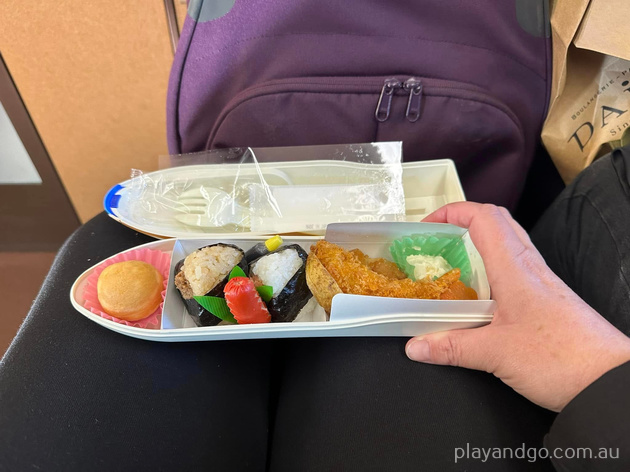
Pusher or Child Carrier?
If you have small children, you’ll want a pusher or a backpack carrier. Be aware that there are many places in Japan with a LOT of stairs, and small spaces. A pusher can work if you have a lightweight, compact stroller. We used a stroller that packed down to fit in a carry on bag, and even then there were a few situations where it was a hindrance. A lightweight and compact backpack child carrier works well, and you’ll see a lot of locals using front carriers for babies.
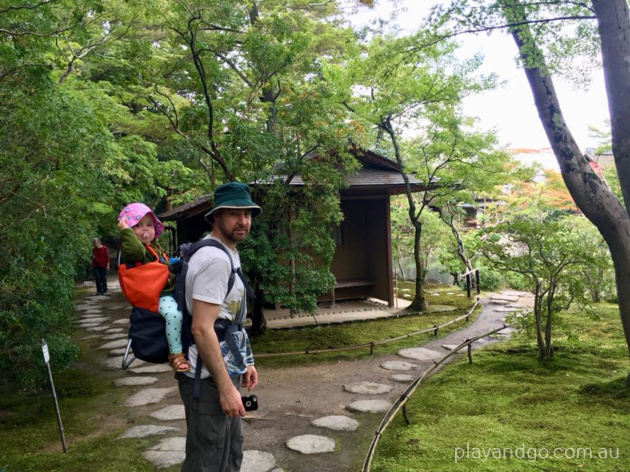
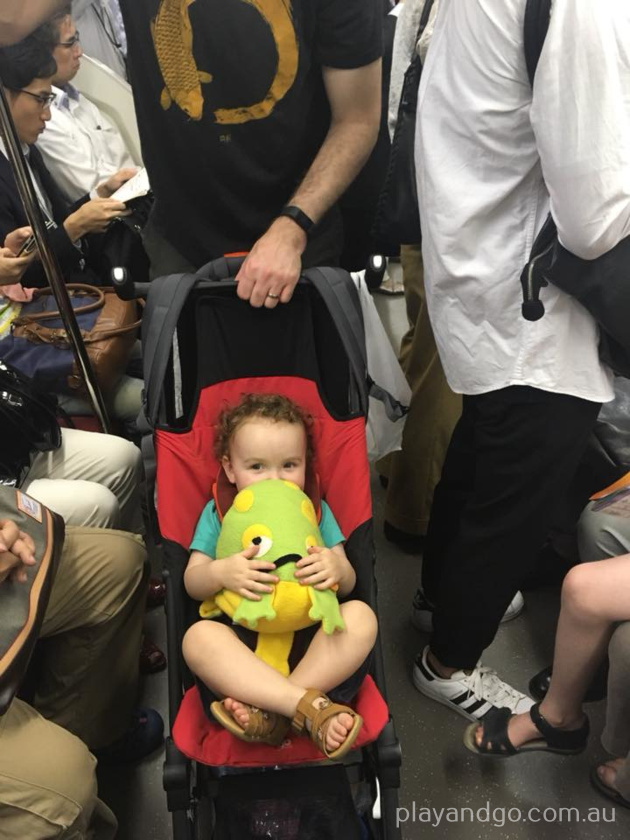
Taxi
Before you leave, download the Go Taxi app for Japan, and/or Uber and set up an account. Go works the same way as Uber, and is the easiest way to book taxis, and makes it easy to communicate your destination as you can simply select it on a map.
Taxis are slightly cheaper than in Australia, and if you’re traveling as a family they can be an affordable and handy option for certain situations – including if you’re just tired of walking.
Accommodation
It can be a little trickier to find accommodation suitable for families in Japan. Most hotels have family rooms, but these can be limited, so book ahead as much as possible. Most hotels will allow bed sharing with parents and small kids, and often assume that’s what you’ll do. The beds tend to be a bit on the small side, so this isn’t always practical. There are some chains that have apartment style hotels for families, but these can be on the pricey side. AirBnBs are often a good alternative, but make sure they are located close to transport. It’s always good to book accommodation as close as possible to a train station when travelling with kids – the last thing you want to do is walk long distances with kids and luggage in tow, especially after a long day of travelling.
Amenities for Families
Japan is super family-friendly, and it’s one of the easiest countries to travel with kids. Most public bathrooms have change tables in both the men’s and women’s toilets, and frequently there are harnessed baby/toddler seats on the walls in toilet cubicles. These are a godsend for when you need the loo and you have a squirmy kid with you!
At most restaurants and with convenience store meal purchases you’ll receive free wet wipes. These are great to stockpile for grubby hands and faces later.
If your kids are still in nappies, these are easy to find in convenience stores (kombinis), pharmacies and supermarkets. If you have a preferred brand it’s helpful to bring some of your own, but we found a good range of nappies and the quality was high.
Most AirBnBs and many hotels have washing machines and dryers for guests to use, and these are fantastic for reducing the amount of clothing you need to take with you. Be aware that many facilities are combined washer/dryers, and these take a long time to dry clothing – plan accordingly.
Japanese people are very positive towards kids and most restaurants, attractions and transport will have child-friendly options. You’ll feel very welcome on public transport with kids, and if they are fussy or upset, don’t be surprised if local people try to cheer them up or distract them.
We’ve found that visiting attractions early in the day is a great way to avoid crowds that might overwhelm kids. Check opening hours, as many places don’t open particularly early. For 24 hour locations such as Fushimi Inari Taisha in Kyoto, arriving early will ensure you have the place almost to yourself.
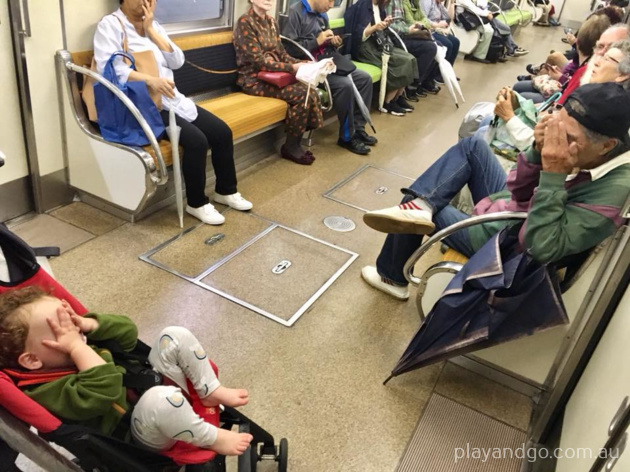
Etiquette
Although Japanese people are very kid-positive, it’s always good to try to follow local customs and etiquette. Some pointers:
- Try to keep the volume down on trains. Don’t talk loudly, make phone calls or play music on your phone.
- On crowded trains, move purses and backpacks to your front so you don’t accidentally bump other passengers.
- Don’t eat and walk. It’s considered rude to eat and drink while walking. Stand near street food stalls to eat and find park benches to sit down to snack.
- Make an effort to learn a few key phrases in Japanese. Even young kids can use language learning apps to learn some words. Using please, thankyou, good morning, excuse me, etc really helps when interacting with locals. Download google translate on your phone for live (via camera) translations of signs, menus and product labels.
- Respect “no photos” and “no entry” signs in temples and shrines, and make a small offering and prayer at temples and shrines before obtaining goshuin, if relevant.
- Wear shoes that are easily removable – many indoor areas require you to take off your shoes. There will be shelves for shoes or bags provided for you to carry your shoes while inside.
Food
Food is cheap and dining out in Japan is generally family friendly. Larger families may have trouble finding room in many restaurants as they tend to be small with only a few tables. Most places will have food suitable for fussy eaters.
Convenience stores (kombini) are fantastic options for food for kids, and the stores are everywhere, and open 24 hours a day. There are always plenty of fresh options like sandwiches (with the crusts already removed), onigiri (rice balls) and bento plates with rice/noodles, meat and vegetables. All convenience stores will have the option of heating up your meal in a microwave if you prefer.
Supermarkets are also great options for fresh fruit, snacks, and meals. You’ll find large bento-style dinners similar to those from convenience stores – often for less than $5.
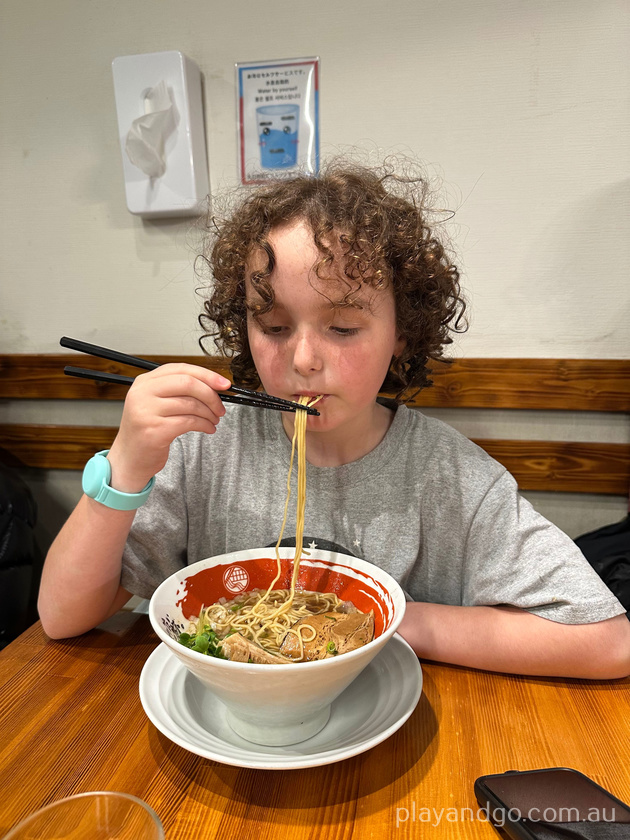
Safety
Japan is incredibly safe. However, it’s good to make plans in case you get separated – the main place this may happen is in crowded train stations.
We recommend all kids have some sort of tracker on their person. We used a combination of an air tag in a wrist band, and an old phone with a travel sim for our child. Note that most travel sims (physical or e-sim) are data only and don’t allow phone calls. Make sure you have a messaging app set up beforehand, such as Kids Messenger or Whatsapp, and your child can message you if they get separated. A phone with a sim also enables you to activate a tracking app such as Find My – this will also come in handy if their phone gets left on a train accidentally.
We also recommend writing down your accommodation details on a piece of paper for your child to have in case they need to relay this to police if they get lost.
Attractions
There’s no shortage of attractions in Japan that are kid friendly. Amusement parks such as Disneyworld, Universal Studios, Warner Bros Studio Tour – The Making of Harry Potter, TeamLab Planets and Teamlab Borderless are all great places to visit.
Japan’s gardens are beautiful and great places to escape busy city life. A few of our favourites include:
- Kinkaku-ji Shrine and Gardens in Kyoto
- Tenryu-ji Temple and Gardens in Kyoto
- Arashiyama Bamboo Grove in Kyoto
- Yoshikien and Isuen Gardens in Nara, near Kyoto
- Shukkeien Gardens in Hiroshima
- Kanazawa Castle Park in Kanazawa
- Kenrokuen Gardens in Kanazawa
- Goryokaku Star Fort in Hakodate
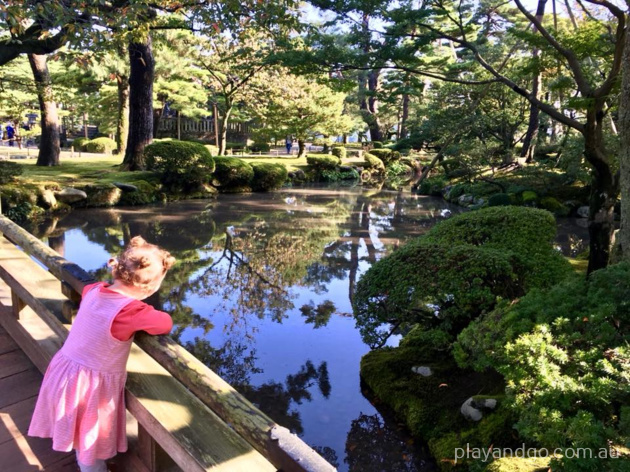
Temples and Shrines are everywhere, and these are great places for kids to learn and experience Japanese culture. Some of our favourites include:
- Fushimi Inari Taisha in Kyoto
- Meiji Jingu in Tokyo
- Senso-ji in Tokyo
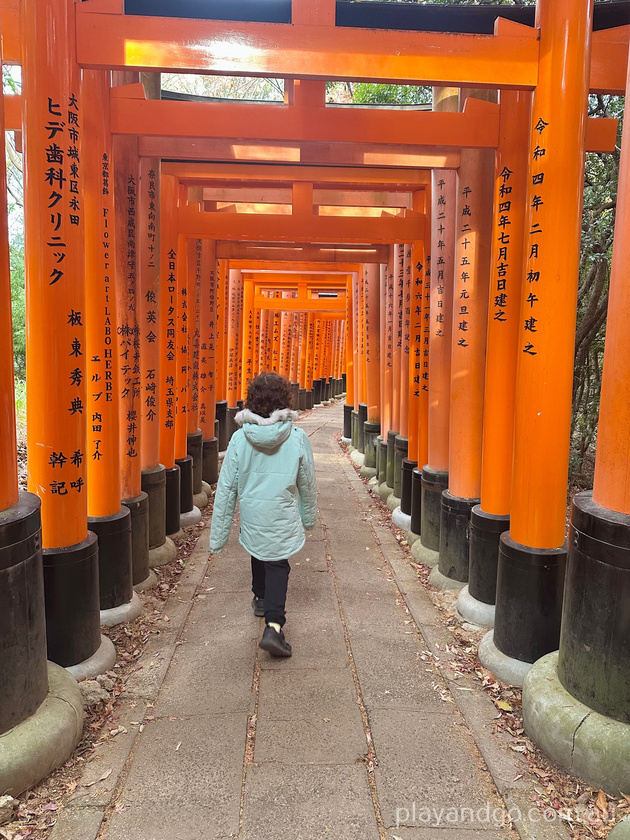
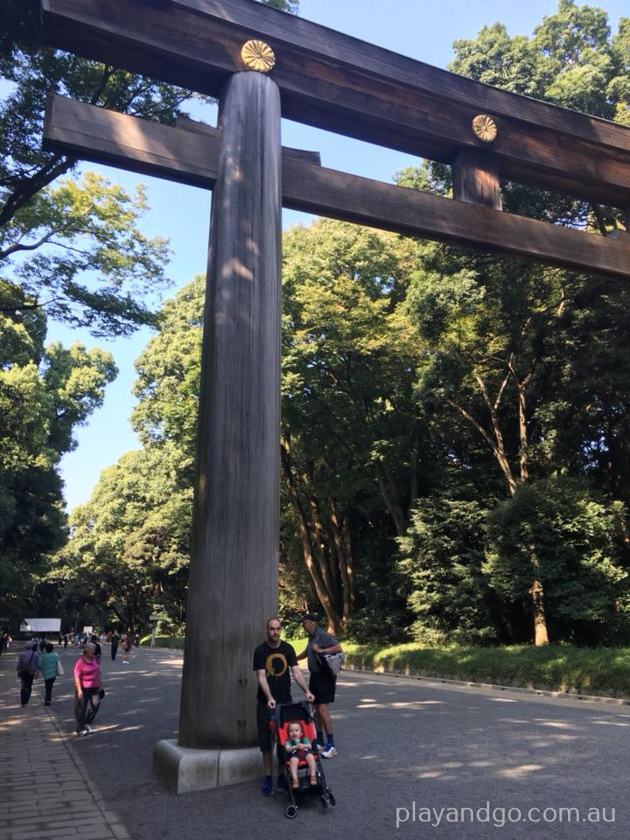
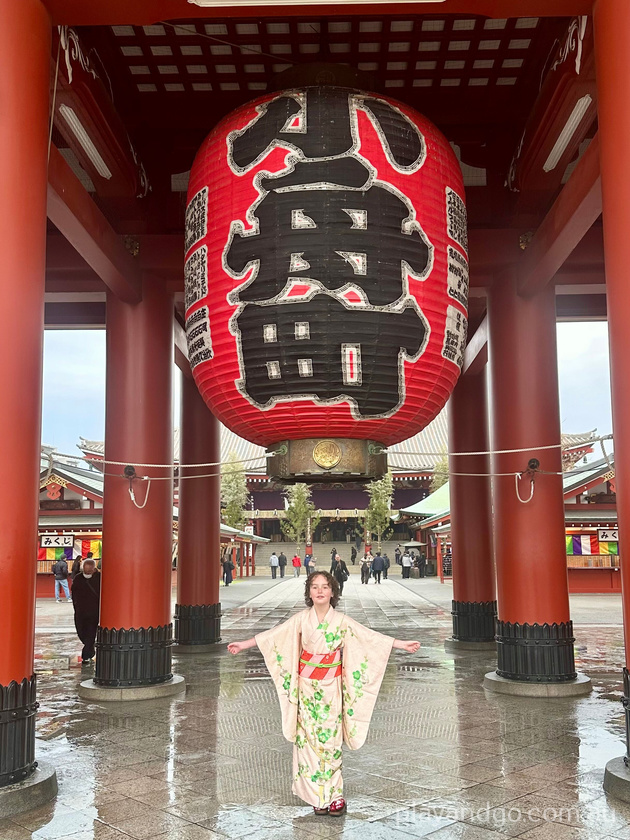
Other attractions that we really enjoyed with kids include:
- Jigokudani Monkey Park near Nagano (monkeys bathing in hot springs)
- Shibuya Crossing in Tokyo
- Okunoshima Island (Rabbit Island) near Hiroshima
- Nara Deer Park and Todaiji Temple in Nara, near Kyoto
- Cup Noodle Museum in Osaka or Yokohama
- Osaka Castle
- Hakone Open Air Museum
- Owakudani Geothermal Village near Hakone
- Shiroi Koibito Park and Chocolate Factory in Sapporo
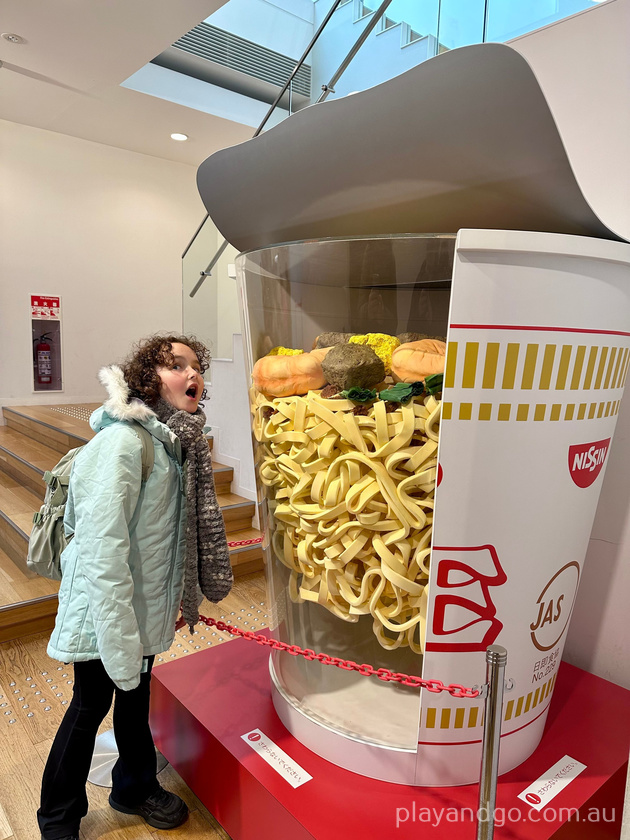
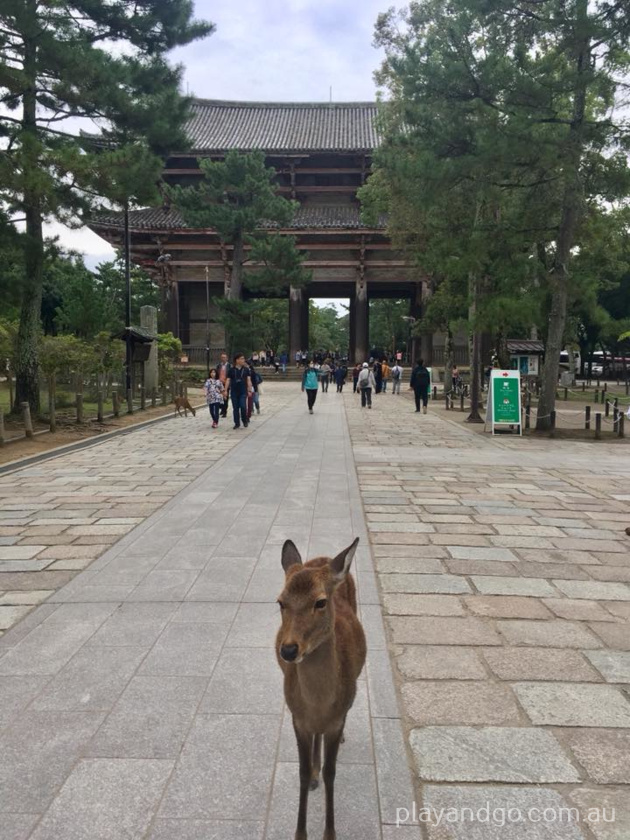
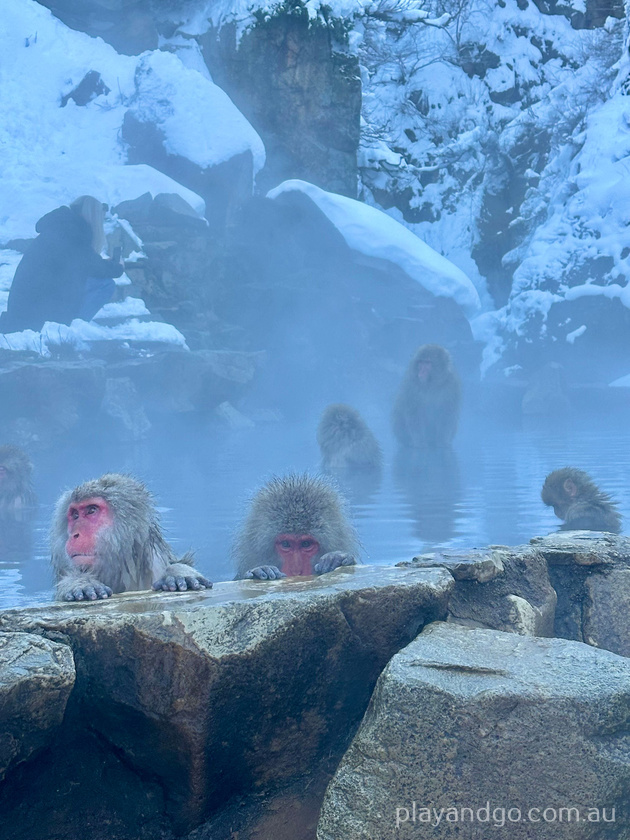
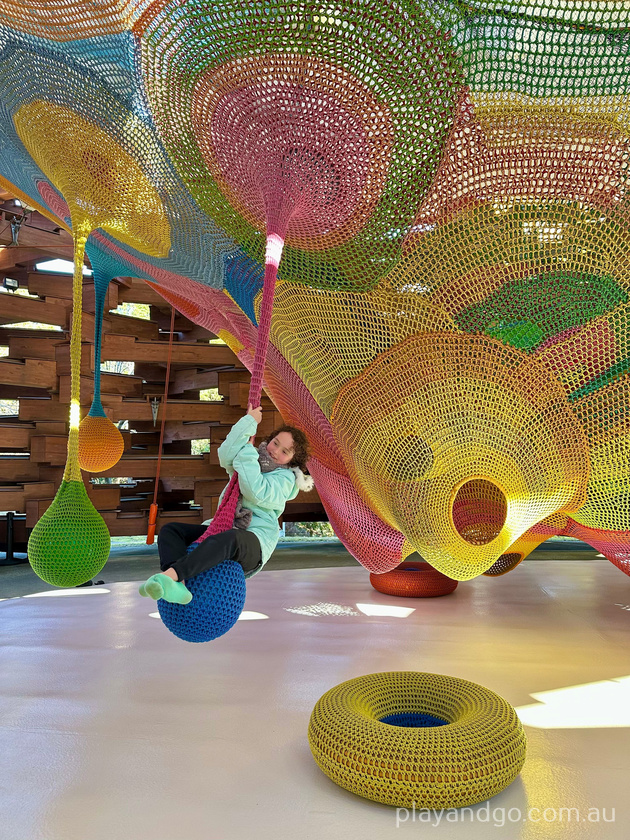
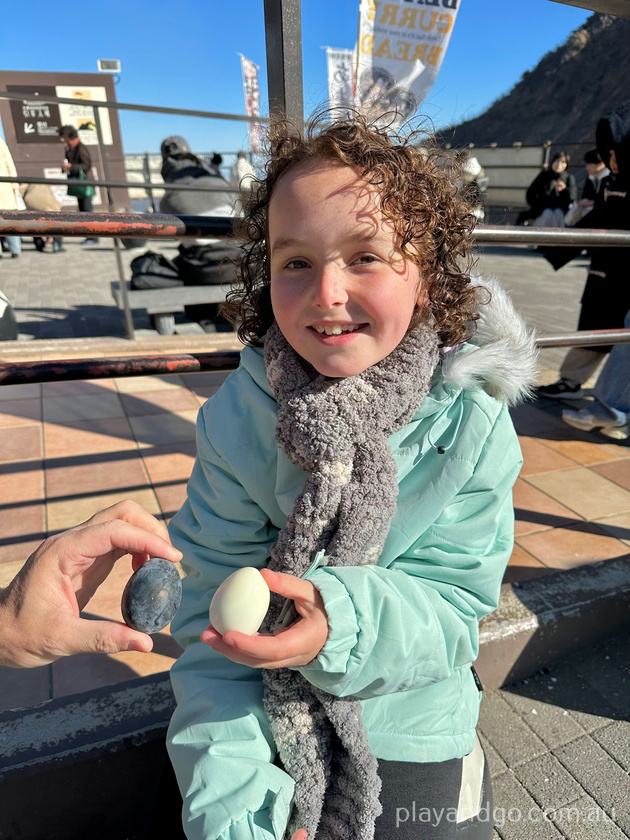
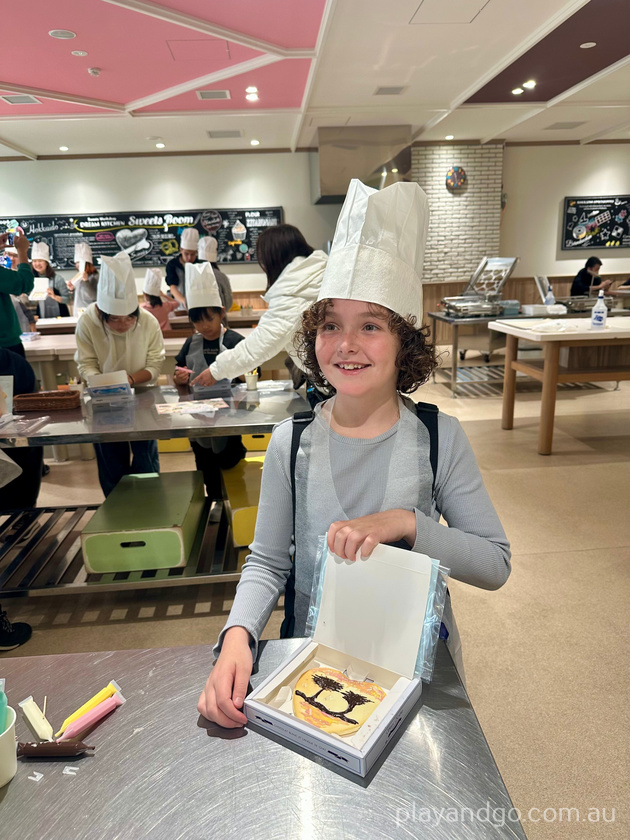
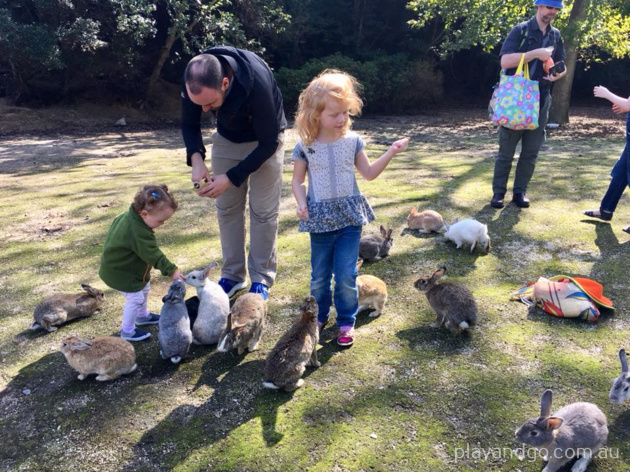
Souvenirs
Japan can be a bit of a shopper’s paradise, and there’s plenty of things your kids will see (and want) to take home. The best places for cheaper souvenirs are stores like Daiso and Don Quijote, convenience stores and attractions.
Gachapon (capsule vending machine) stores are everywhere, and can be a great place to find something quirky and specific to Japan.
Eki Stamps
Eki stamps are train station stamps, although you’ll also find them at various tourist attractions. These are free rubber stamps and each one is different. Buy a stamp book before your trip, or one from a stationery store on arrival. Any notebook larger than passport size will do, and kids will end up with a collection of stamps showing all the places (and train stations) they’ve visited on their trip.
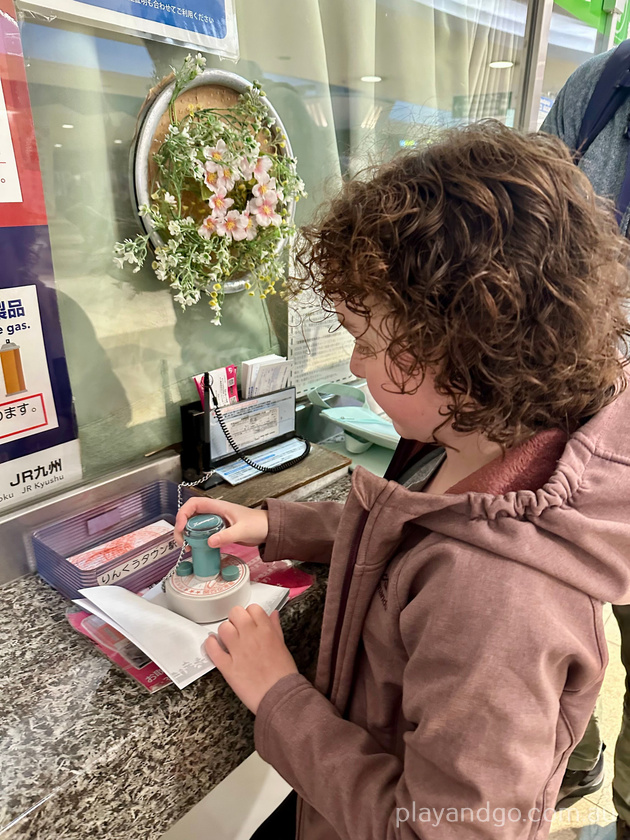
Goshuin
Older kids might like collecting Goshuin. These are stamps to mark a visit to a temple or shrine, and include a series of stamps and calligraphy on a single page of a book. Some places provide pre-written goshuin on a slip of paper to be glued into a book, but for hand stamped/written goshuin, kids will be able to watch a scribe create their goshuin for them. You can buy goshuincho (goshuin books) from temples and stationery shops for $10-20, and each goshuin generally costs $2-5. Some temples have seasonal goshuin or special goshuin to mark events, and these can be very colourful.
Note that only goshuin should be placed in a goshuincho, do not write or stamp anything in the book yourself.
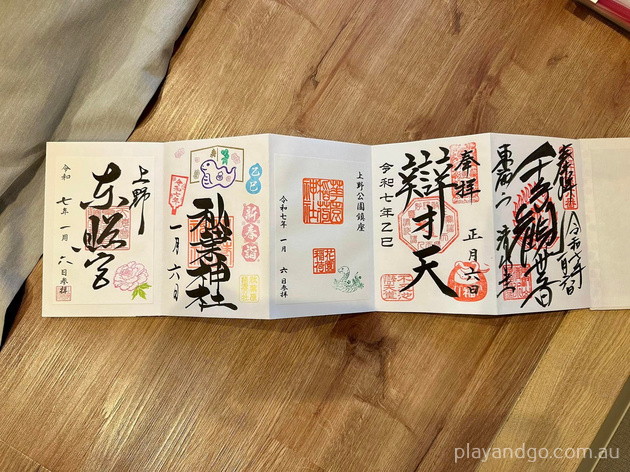
When to go
Japan is great at any time of year, but certain times will benefit you depending on what sort of holiday you want to have.
Summer
Summer in Japan can be very hot and humid. It’s less busy at this time of year but the heat can really affect kids, and it can limit how much you do, especially outdoors. Make sure you stay hydrated, fortunately in Japan there are drink vending machines absolutely everywhere.
Spring
Spring can be very busy due to Sakura blossom season, and you may find accommodation harder to book. However, gardens and temples are spectacular at this time of year, and the heat is less of a worry – it may be quite rainy though.
Autumn
Similar to spring, it can be very busy in autumn as autumn colours in Japan are vivid and gardens, temples and parks are popular. It can still be quite warm, humid and wet at this time of year.
Winter
Winter is a fantastic time to visit due to the colder, drier weather. If you plan on viewing Mount Fuji, this is the best time of year to have a chance of it being visible and not in cloud. Winter is also a great opportunity to see snow, although this is not guaranteed – for snow fun, visit the alps near Nagano, or Hakodate and Sapporo in Hokkaido. There are multiple tourist-friendly ski resorts in Hokkaido that attract a lot of Australians, if you want to ski.
Read more about our adventures in Japan:
Warner Bros Studio Tour – The Making of Harry Potter | Tokyo, Japan | Review
TeamLab Borderless | Tokyo, Japan | Review
TeamLab Planets | Tokyo, Japan | Review
At Play & Go Adelaide we make every effort to provide accurate information to the best of our knowledge at the time of publication. We recommend confirming times, dates and details directly before making any plans as details may be subject to change.
As per all Play & Go reviews unless specfied, this is not a sponsored post and our review is done completely independently.
Image Source: all photos by Play & Go Adelaide
SUBSCRIBE
Follow Play & Go on Facebook and Instagram
Want to get all the latest events and activities straight to your inbox?
Subscribe to our weekly email newsletter below to keep up to date with our latest posts and find out all the best events & activities for Adelaide families. Newsletters are only sent once a week, and you may sometimes get a special offer exclusively for our subscribers only!





